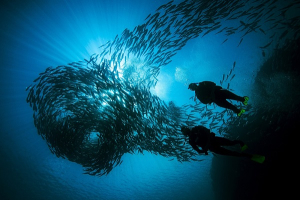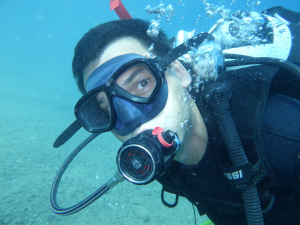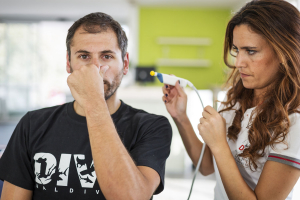Kostas Marmarinos
Entdecke die bezaubernden Reize der Insel Kos
Entdecke die bezaubernden Reize der Insel Kos: Ein griechisches Juwel
Eingebettet in der Ägäis, erhebt sich die Insel Kos als Juwel in der griechischen Krone und fasziniert Reisende mit ihrer Mischung aus reicher Geschichte, atemberaubenden Landschaften und lebendiger Kultur. Begleite mich auf einer Reise, um den zeitlosen Zauber dieses mediterranen Paradieses zu erkunden.
Ein historisches Gewebe: Von der Antike bis zur Moderne
In Geschichte getränkt, lädt die Insel Kos Besucher ein, in ihre antike Vergangenheit einzutauchen. Als Geburtsort des Hippokrates, des Vaters der modernen Medizin, trägt sie ein Erbe von Heilung und Weisheit. Schlendere durch die Ruinen des Asklepieions, eines antiken Heiligtums, das Asklepios gewidmet ist, wo die Echos alter Rituale noch nachhallen.
Meisterwerk der Natur: Strände, Wälder und mehr
Die natürliche Schönheit der Insel Kos bezaubert an jeder Ecke. Von den unberührten Stränden des Paradise Beach bis zur friedlichen Oase des Plaka-Waldes gibt es eine Landschaft für jeden Geschmack. Verbringe faule Tage in der Sonne oder begebe dich auf ein Abenteuer durch üppige Täler und raue Berglandschaften.
Kulturelles Kaleidoskop: Wo Vergangenheit auf Gegenwart trifft
Das kulturelle Erbe der Insel ist so vielfältig wie ihre Landschaften. Erkunde die mittelalterlichen Wunder von Kos-Stadt, wo die Ritterburg die Zeit überdauert. Verliere dich in den labyrinthartigen Gassen, wo byzantinische Kirchen und osmanische Moscheen Einblicke in vergangene Jahrhunderte bieten.
Eine gastronomische Odyssee: Die Aromen von Kos genießen
Ein Besuch auf Kos ist nicht vollständig ohne den Genuss seiner kulinarischen Köstlichkeiten. Von frisch gefangenem Meeresfrüchten bis zu sonnenverwöhnten Früchten und Gemüse ist die Fülle der Insel ein Fest für die Sinne. Kosten Sie traditionelle griechische Gerichte wie Moussaka und Souvlaki oder gönnen Sie sich eine Meze von lokalen Spezialitäten, gepaart mit feinen Weinen.
Abenteuer warten: Aktivitäten für jeden Entdecker
Ob Sie ein Abenteurer oder Naturliebhaber sind, Kos bietet eine Vielzahl von Aktivitäten für jeden Geschmack. Tauchen Sie in das türkisfarbene Wasser für eine Tauchexpedition ein oder satteln Sie ein Pferd für einen Ausritt entlang der Küste. Wandern Sie auf alten Pfaden zu versteckten Ruinen oder begeben Sie sich auf eine Bootstour, um abgelegene Buchten und Höhlen zu entdecken.
Tradition feiern: Festivals und Veranstaltungen
Das ganze Jahr über erwacht Kos mit einem Geflecht von Festivals und Veranstaltungen zum Leben, die ihr reiches kulturelles Erbe feiern. Nehmen Sie an den Festlichkeiten des Hippokratischen Marathons teil, wo Läufer aus der ganzen Welt dem berühmtesten Sohn der Insel huldigen. Stoßen Sie beim Weinfestival an, wo Winzer die feinsten Weine der Region präsentieren.
Planen Sie Ihre Flucht: Praktische Tipps für Reisende
Bereit, Ihr eigenes Abenteuer auf der Insel Kos zu beginnen? Planen Sie Ihre Flucht problemlos, indem Sie diese praktischen Tipps berücksichtigen. Optimal ist die Anreise in den Nebensaison von Frühling und Herbst, wenn das Wetter mild ist und die Menschenmengen geringer sind. Vereinbaren Sie Unterkünfte im Voraus und wählen Sie zwischen Luxusresorts, charmanten Pensionen oder Strandvillen. Die Anmietung eines Autos wird empfohlen, um die Insel in Ihrem eigenen Tempo zu erkunden, aber auch öffentliche Verkehrsmittel sind verfügbar.
Fazit: Umarme den Zauber der Insel Kos
Da unsere Reise zu Ende geht, lasst den Zauber der Insel Kos in eurem Herzen verweilen. Ob Sie nach altem Wissen, natürlicher Schönheit oder kulinarischen Genüssen suchen, dieses griechische Juwel verspricht ein unvergessliches Erlebnis. Kommen Sie, entdecken Sie die bezaubernden Reize von Kos, wo jeder Moment ein Fest des Lebens, der Liebe und des Abenteuers ist.
We are hiring!
We are looking for a PADI Instructor to join our small and friendly dive team.
Mostly private diving, DSDs and Padi courses.
5-6 months work - May or June until the end of October 2024
EU passport only.
New Instructors and couples are welcome!
Please email us to [email protected]
European Resuscitation Council Guidelines 2021: Basic Life Support
Diver Medical | Participant Questionnaire
Please check the medical questionaire before any booking!
Recreational scuba diving and freediving requires good physical and mental health. There are a few medical conditions which can be hazardous while diving, listed below. Those who have, or are predisposed to, any of these conditions, should be evaluated by a physician. This Diver Medical Participant Questionnaire provides a basis to determine if you should seek out that evaluation. If you have any concerns about your diving fitness not represented on this form, consult with your physician before diving. If you are feeling ill, avoid diving. If you think you may have a contagious disease, protect yourself and others by not participating in dive training and/or dive activities. References to “diving” on this form encompass both recreational scuba diving and freediving. This form is principally designed as an initial medical screen for new divers, but is also appropriate for divers taking continuing education. For your safety,and that of others who may dive with you, answer all questions honestly.
Single private dive
The private dive guide service offers you a flexible schedule, can be booked just for you and helps you get the most out of your holidays. Kos Divers offers private dive services that will allow you to improve or refresh your diving skills in a uniquely personal way. Our dive center is based just next to the sea. The dive site is full of different fish, octopus and more with crystal water and very good visibility. Max depth no more than 17m but we can dive at shallower depth if it is needed or if you prefer to dive shallower.
Why Go Private?
By choosing a private dive, you receive the extra care and attention that group dives can't offer.
Maximum of two divers per group or more if they are family members or close friends!
The cost of a private guide is small compared to the significant benefits, making it ideal for:
- Divers who enjoy diving in smaller, more personal groups
- Children
- Divers who lack confidence
- Inexperienced or those who haven't dived for a while
- Underwater photographers who need extra time
- Divers with physical challenges requiring special care
- Those who use a lot of air and want to improve their efficiency
Dive site
Our dive center is based just next to the sea. Our local dive site is full of different fish, octopus and more with crystal water and very good visibility at max depth 17m.
Shore diving is an affordable and adventurous way to explore the underwater world. The appeal of shore diving is often its flexibility and convenience without the need for boat logistics, the sites can be visited at most times of day.
Our dive site is ideal for all sorts of dive training, novices, divers who need refresh and advanced divers.
Slow and easy entry from the beach, where we meet a sandy flat plateau from 0-5m depth, pool like conditions, where we can practice our breathing, swimming and buoyancy which is important and safe for novices and divers who haven't dived for a while.
Less than 5 min swimming from our entry point and passing the plateau is following a slow and gentle slope up to 12-13 m where we meet a second plateau up to 17-18m deep. There among others you can see replicas of Greek statues standing on the seabed, an excellent spot for photos.
The dive site bottom is composed of sand, rock, sea grass and Posidonia oceanica fields. The underwater life is surprisingly rich for a shore dive.
Typical aquatic life while scuba diving in Kos: octopus, rockfish, scorpion fish, nudibranchs, macro life, schools of fish, all kinds of breams, triggerfish, stingrays, cuttlefish, small groupers, lionfish and much more.
Occasional sightings of amberjacks hunting out in the blue, small tunas and Mediterranean barracudas.
Some species that you will be able to observe are unique to our sea (endemic species) and some of them Lessepsian immigrants from the Red sea.
Equaleasy - equalisation techniques
Divers know it all too well: barotrauma epidemics occurring on a liveaboard or on long dive trips
are not due to the interference of some supernatural entity, they are due to equalisation mistakes.
For all we know, the infamous Ghost of Dead Corals—the main suspect behind electrical
anomalies and mysterious boat sinking—does not mess with divers' ears.
Unnatural condition
Equalising while the ambient pressure is rapidly increasing is not an ability required in the natural
environment of humans as land animals. We need to equalise mechanically only in particular
conditions, such as in the landing phase of an aircraft or during a descent down the water column.
Coming down a mountain on foot we don’t need to equalise. Jumping off the top Mt. Eiger’s north
face could possibly cause a need to equalise, but nature appears to have weeded out the genes of
those who might at one point or another in human evolution have consented to participate in such
an experiment. Undoubtedly some divers can equalise with ease, almost without realising it. Who
knows if they are descended from populations who ventured underwater, or the forgotten offspring
of those who headed down off the Eiger?
The art of equalisation
As scuba divers we breathe constantly through a regulator, which allows us to maintain our lungs
at their normal volume and use any equalisation technique at any depth. Moreover, our use of the
Frenzel and hands-free techniques is aided by the air coming into the oral cavity from the
regulator. We have it easy. The true artists and high priests of equalisation are found in freediving.
Freedivers don’t breathe through a regulator. For them, the Valsalva manoeuvre stops working at
depths as shallow as 10 metres. To use the Frenzel and hands-free techniques, freedivers need to
move air from their lungs into their oral cavities first by a variety of techniques, depending on the
depth
Valsalva, an overrated technique
The best known and most utilised technique among scuba divers is snubbed by freedivers due to
its limited potential. It takes its name from Antonio Maria Valsalva, an Italian anatomist of the 17th
century. He was also the first to note that this manoeuvre affects the pressure of the intrathoracic
system and the heart. The Valsalva manoeuvre is now considered one of the causes that
encourage the migration of microbubbles from one atrium to another in divers with a PFO (Patent
Foramen Ovale). However, this isn’t why freedivers snub it: Because the lungs of freedivers are
compressed at depth, abdominal pressure can no longer be used to further reduce the lung
volume at depths as shallow as ten metres, making this technique impossible to use.
Doctor Frenzel’s invention
Two and a half centuries later, in 1938 to be precise, Ears Nose & Throat (ENT) specialist Dr.
Hermann Frenzel, an officer in the German Luftwaffe, developed a technique which he taught to
Stuka pilots, the infamous dive bombers. In this technique, the tongue comes into play by pushing
air upward and toward the back of the palate, so that the volume decreases. Since the glottis is
closed, the pressure increases. The soft palate is open, and the nostrils are closed. The increased
pressure in the nasal cavity then induces the eustachian tubes to open. In some people, the
opening of the tubes is eased by a mechanical effect that allows the tubes to open at a lower
pressure.
The Frenzel manoeuvre can be performed in two different ways. The first relies 100% on pressure
generated by the movement of the tongue. The second uses 50% pressure and 50%
biomechanics: The tubes open due to the movement of the tongue and the contraction of the
upper nasopharyngeal. In either version, the Frenzel manoeuvre reduces the stress on the middle
ear and the equalisation effort.
Hands-free
On land, the gesture of pinching the nostrils between thumb and forefinger usually signals an
unpleasant smell. Underwater and among divers, the same signal means something completely
different: The instructor, or the buddy, is reminding us to equalise. This simple signal can induce a
misconception: Many divers don't know that with a little practice, it is possible to equalise without
even touching the nose. Using the hands-free technique, the diver opens the soft palate, which
allows air from the regulator (at ambient pressure) to fill the nasal cavity and mechanically open
the tubes. During descent, the pressure inside the middle ear and the ambient pressure are
equalised automatically.
We’ve already described three techniques here, but for freedivers willing to exceed depths of 30
m, this may still not be enough. These divers rely on their own advanced versions of the Frenzel
manoeuvre and the hands-free technique, and ultimately something called the mouth-fill
technique. In the latter, the freediver uses their mouth and cheeks as a compressor to push air
toward the middle ear.
The diver’s position
Except in the no-limits discipline, freedivers always dive head-down. Scuba divers can afford to
descend (and equalise) more comfortably in a feet-down or horizontal position. It should be noted
that using the Valsalva manoeuvre in a head-down position can be harmful to a diver due to an
increased risk of overpressurising and congesting the diver’s middle and inner ear.
The pace of equalisation
While we learn to listen to our bodies better with practice and over time, equalisation mistakes can
persist. Even though the textbooks are very clear about equalising before we feel discomfort, how
many times did we need to be reminded by our ears?
Speech therapy for divers
Learning to control the muscles in its body is an ancient challenge for homo sapiens. In order to
walk upright, speak, sing, type, or play the piano, our body requires precise coordination between
our muscular system and the nervous system. In speech therapy, patients learn to become aware
of the functions and actions of muscles and organs involved in forming speech. This aspect of
speech therapy has become an integral part of the training of divers seeking to improve their
performance and safety during descent. Who would have thought that moving and controlling the
tongue, or forming the “T,” “Ka” and “N” sounds underwater, could make your ears safer and more
comfortable?
About the author
DAN Member since 1997, Claudio Di Manao is a PADI and IANTD diving instructor. He's the
author of a series of books and novels about diving, including Shamandura Generation, an
exhilarating portrait of Sharm el Sheikh's diving community. He collaborates with magazines,
radios and newspapers, talking and writing about diving safety, marine life and travels.
Safety first
Hello fellow scuba divers,
With the safety of our guests and staff being our top priority we will be following the latest Padi and DAN recommendations for diving operations.
Protocols for disinfection and other COVID-19 issues have been posted by DAN (Divers Alert Network) and UHMS (Undersea Hyperbaric Medical Society). We are following best-practices and all their webinars to get ready! Safety is job one at every PADI shop, and COVID-19 is no exception.
All our dives are private or in family groups or very small groups max 3 divers.
You have the option to choose the Private Gold option for discover scuba diving experience or for certified divers packages, if you wish to dive private with our instructors.
Kos Divers
Equaleasy - Debunking the myths of equalisation in diving
29 Apr 2022 | Claudio Di Manao DAN Alert Diver
Equaleasy - Debunking the myths ofequalisation in diving
Anthropological studies on Homo subaquaticus show that members of this species are quick to
learn—at a cost—that their ears play an important role when they go underwater. The most
common underwater accident that occurs with this species is barotrauma. Yet when it comes to
myth-making, the more fanciful stories produced by members of the species seem to relate not so
much to barotrauma, but mainly to how gases affect the body, especially the brain. Stories on the
topic of equalisation and proper hygiene for the ears and nose seem rare. Evolution at work?
"Nowadays divers are well informed; they are thirsty for knowledge"
Dr. Cosimo Muscianisi, ENT specialist, diving and hyperbaric doctor, and passionate technical
diver, has no doubts, “Judging from their questions, and from the terminology they use, we meet
well informed divers at meetings and conferences.”
“Unfortunately, we witness some bad practices, amongst divers and non-divers. Accidentally even
some diver could try to remove some wax by using inappropriate tools like parts of toothpicks and
swabs. The deep insertion of earplugs or headphone rubber parts could require the intervention of
an ear specialist for their removal.”
A careful diver is unlikely to insert in her/his ear canal objects that could permanently damage the
ear, such as keys and pen caps. Yes, as Dr. Muscianisi witnessed, there are people who believe
that the tiny groove on the cap’s bayonet, as that of the keys, is suitable for ear wax removal.
Generally speaking, as divers we don't do such silly things. We make different mistakes.
The grey area
During initial training, divers typically pick up a few ideas about diving physiology. Their knowledge
grows as they continue their education. An entry-level certified diver would be afraid of breaking
the rules; they would hardly dive with a cold or sinusitis. What’s more, because they obey the
sacred instruction in their diving manuals that specifies a reverse block could cause much worse
sorrow than calling the dive, entry level divers avoid using nasal decongestants at all costs. A
diving professional, on the other hand, might take ephedrine derivatives or other orally
administered vasoconstrictors for their long-lasting effect, if in need, despite (and sometimes
wilfully ignoring) a variety of associated side-effects that are incompatible with diving.
Empowered by a handful of notions as it were, diving professionals are typically the most likely to
exhibit an excess of confidence. Like all divers, whether entry level or instructors, they are sorely
tempted to make self-diagnoses, with the help of the infamous “internet consulting”. Most divers,
and an even greater number of non-divers, typically blame a sense of fullness in the ears and
muffled hearing on an excess of earwax, explains Dr. Muscianisi, though in many cases it could be
a symptom of a middle ear problem. A neglected inflammation of the middle ear can lead to a
symptom’s worsening in the mastoid and middle ear area. Conversely, in the case of hitching as
the main symptom, the unsupervised use of corticosteroid drops, or tablets could lead to a
worsening if the case were linked to a fungal infection in the outer ear. The consequences in either
case can be serious, such as permanent damage of the auditory system, or having to hang up
one’s fins for good.
Top of the chart
On the top ten list of underwater misadventures, barotrauma retains the number one spot. It is
hard to find a diver who has never suffered from it. When barotrauma occurs, we all know where to
put the blame: an equalisation mistake, the thoughtless use of decongestants, or diving in not
perfect health conditions, as with some sign of cold. Unfortunately, the sacred training texts offer
little to satisfy divers’ thirst for knowledge on this topic. As a result, most divers only know one or
two equalisation techniques. The more skilled ones know three. However only a tiny fraction of
divers would be able to demonstrate mastery of just one of these techniques.
Many divers are unaware that equalising at depths as shallow as ten metres can be difficult, if not
impossible, without the help of compressed gas from scuba. Many divers are unaware that
equalising head down, feet up can be a challenge. Yet we constantly use our ears, nose, and
throat to breathe, swallow, speak, smell and taste. But we are not fully in control. Maintenance and
control of this area of the body are historically an exclusive domain of opera singers. Unfortunately
for us, opera singers never developed an equalisation course for divers. Can you imagine? But
then most divers would struggle to hit a high C.
Getting Back into Diving after a break
THE IMPORTANCE OF BEING A SELF-RELIANT DIVER
Becoming a self-reliant diver is an important skill, regardless of whether you plan to dive unguided any time in the future.
While working as a dive instructor, I used to ask customers I hadn’t dived with before to assemble their gear before the first dive. This was to accomplish two things: so that they could familiarize themselves with the gear, and to help me observe their comfort level and independence as a self-reliant diver.
Often, I noticed that customers — certified divers — were putting their BCDs on the wrong side of the cylinder, with the jacket facing away from the cylinder opening. They also frequently put their regulator on upside down, with the LPI hose on the right and regulators on the left.
This gave me a clear indication of how much assistance the divers would need during their dives. Sometimes divers think they’ll always be diving with a guide or a dive center, so they needn’t worry too much about skills or setting up equipment on their own. Other times they might just not have had enough time or opportunity to practice their skills. In any case, becoming a self-reliant diver is always a skill you’ll want under your (weight) belt.
DURING YOUR COURSE
Divers must remember that passing a diving course by meeting the minimum standards is not always enough; you must also be able to perform skills comfortably and independently. When you certify as an open-water diver, you are essentially qualified to go diving with a certified buddy, independent of a dive professional. This is what you are paying for, and this is the standard you should strive to meet before diving without a guide.
Further, a dive qualification is not something that you can buy — you must earn it. Divers in entry-level courses should pause to question whether they feel confident enough to dive without a dive professional as they approach their qualifying dive. If the answer is ‘no,’ then they should work in a bit more practice with their instructor or divemaster either before or directly after qualifying.
BECOMING A SELF-RELIANT DIVER
If you are a qualified diver who’s uncomfortable diving without a dive professional, firstly, don’t feel judged. Get in the water and practice until you feel comfortable. Identify your weak skills and work at them until they stick.
Although you may always dive with a center and a guide — never just with a buddy — you should not rely on them exclusively to handle any situation that may arise. You may not know your buddy well and you may be placing your own safety, and potentially your life, in a stranger’s hands.
Even if you do some research and decide to trust your dive professional with this huge responsibility, you may still dive with a group of 10 other people — all of them also relying on the professional to keep them safe, check their air, and control their buoyancy, while also trying to navigate and point out interesting marine life.
While dive professionals are there to provide divers with a service and to assist and take responsibility, especially in the unlikely event of an emergency, it is important to realize that ultimately the responsibility of your safety lies with you.
JUANITA PIENAAR / AUTHOR
Published in scubadiverlife.com

















